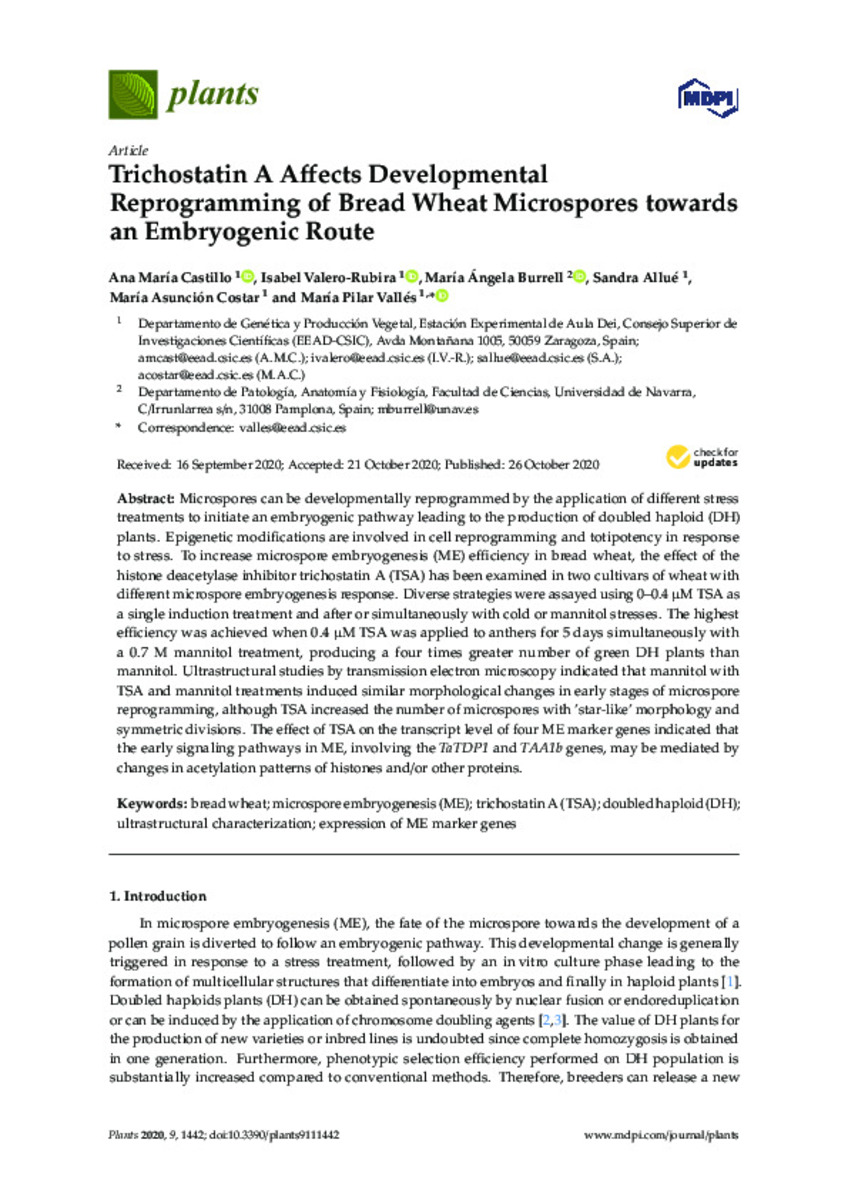Trichostatin a affects developmental reprogramming of bread wheat microspores towards an embryogenic route
Keywords:
Bread wheat
Microspore embryogenesis (ME)
Trichostatin A (TSA)
Doubled haploid (DH)
Ultrastructural characterization
Expression of ME marker genes
Note:
This article is an open access
article distributed under the terms and conditions of the Creative Commons Attribution
(CC BY) license (http://creativecommons.org/licenses/by/4.0/).
Citation:
Castillo, A.M. (Ana María); Valero-Rubira, I. (Isabel); Burrell, M.A. (María Ángela); et al. "Trichostatin a affects developmental reprogramming of bread wheat microspores towards an embryogenic route". Plants-Basel. 9 (11), 2020, 1442
Statistics and impact
0 citas en

0 citas en

Items in Dadun are protected by copyright, with all rights reserved, unless otherwise indicated.







